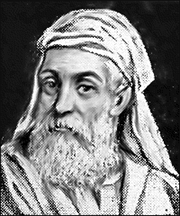E-Archive
Off the Beaten Track
in Vol. 19 - March Issue - Year 2018
Fire, Air, Water and Earth


No mortal thing has a beginning, nor does it end in death and obliteration; there is only a mixing and then separating of what was mixed, but by mortal men these processes are named ‘beginnings’.
*****
Since human beings first became aware of their surroundings and observed the earth below and the skies above, they have been asking themselves how it all got started. What was the universe made of?
Ancient Greek philosophers believed that everything derived from a single primary substance called arche, which means origin or source. But what was this arche? Was it earth, fire or water? Or possibly a combination of these? For most of the pre-Socratic philosophers, the arche was made out of a single substance, although there was disagreement about what exactly this substance was. Empedocles (490-430 BC) went against the flow when he taught that everything is made from four “roots”: earth, air, water and fire. These roots conveniently represented the states of matter: solids, gasses, liquids and energy. Nevertheless, the existence of these four roots was not enough to explain how everything in the universe is formed or how everything eventually disintegrates. Empedocles stated that there were two forces, love and strife, representing attraction and repulsion. The first force brought together two or more of the roots in varying proportions, thus creating all visible things in the universe, whereas the second force eventually broke everything up. This restored the roots to their original condition and made them available for new combinations with each other. Empedocles also implied that various combinations of roots were responsible for our thoughts and feelings. The philosopher Plato (428-348 BC) later called the roots “elements” and, in the western world, Empedocles’ theory of the four elements became standard dogma for the next two thousand years.
Empedocles wasn’t to be the only one to develop these ideas. Ancient cultures and civilizations in the East elaborated similar theories.
In Hindu tradition, there are five great elements, or Pancha Bhoota, at the basis of all cosmic creation: earth, water, fire, air and ether. The human body is also made of these elements. Each element is associated with one of the human senses and combinations of the elements with six human tastes. According to the Ayurvedic and yogic schools, Pancha Bhoota are associated with the overall health of a person and any illness indicates an imbalance of one or more of these elements. Medical literature in Tibetan Buddhism refers to the same five elements by the almost-identical name of Panch Mahābhūta.
In Pali literature, representing the Theravara branch of Buddhism, earth, water, fire and air are associated with sensory qualities such as solidity, fluidity, temperature and mobility. It is taught that, rather than concentrate on material existence, one must observe how physical objects are sensed or perceived.
Rather than defining actual physical elements, the Wu Xing philosophy in ancient China referred to something that could be translated into English as “five stages” or “five transitions”. As a type of mnemonic device, these five stages were represented by wood, fire, earth, metal and water and indicated different types of energy in a constant state of interaction. Depending on the order in which they were listed, they either defined phases of “mutual generation” (wood feeds fire, fire creates earth [ash], earth bears metal, metal collects water and water nourishes wood) or phases of “mutual restraint” (wood contains earth [trees preventing soil erosion], earth dams water, water extinguishes fire, fire melts metal, metal chops wood). These phases were used to explain a wide range of phenomena, from cosmic cycles to the workings of internal organs in the human body. To this day, the five major planets are associated with and named after the elements: Jupiter is Wood, Mars is Fire, Saturn is Earth, Venus is Metal, and Mercury is Water. These five planets, together with the Moon which represents Yin and the Sun which represents Yang, form an important part of the I Ching, a Chinese text which describes an ancient system of cosmology and philosophy.
In words that neatly speak for all of these ancient philosophies, Empedocles was truly prescient when he wrote: For it is by earth that we see earth, and by water, water, and by air, glorious air; so, too, by fire we see destroying fire, and love by love, and strife by baneful strife. For out of these (elements) all things are fitted together and their form is fixed, and by these, men think and feel both pleasure and pain.
By Giovanni Gregorat, Contributing Editor MFN
Author: Giovanni Gregorat



























